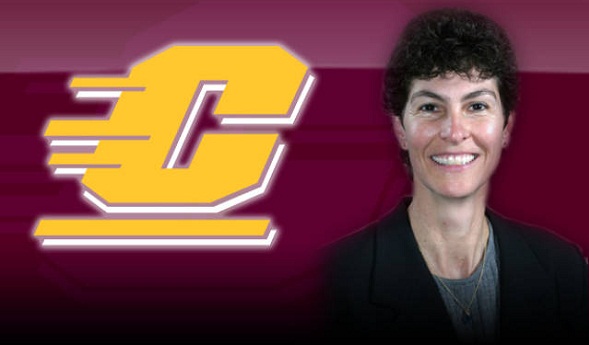
Lessons Learned Keep Paying Off
February 8, 2013
By Terri Finch Hamilton
Reprinted with permission of CMUChippewas.com
Gina Mazzolini's parents taught her to be a good person first, a good student second, and a good athlete after that. But Mazzolini says her involvement in sports at CMU taught her things that went way beyond the classroom.
"At Central, I learned women are just as good as men -- or better," says Mazzolini, assistant director at the Michigan High School Athletic Association. "I learned that if we put our minds to it, we can do anything."
A star athlete in volleyball and basketball at CMU from 1974 to 1978, Mazzolini says college sports helped her soar after the limitations for girls in high school sports in the early 1970s.
"In high school, women were always taking the back seat to men," says Mazzolini, 57. "I didn't see women in leadership positions in high school. Girls couldn't use the weight room -- we had to sneak in, then we'd get kicked out. They'd look at me and say, 'Why would you want to lift weights?'
"When the guys were done with the gym, then we could use it."
As an athlete at St. Johns High School, Mazzolini was just starting to compete competitively, she says. She won the school's first ever female athlete of the year award.
"Then I went to Central Michigan, and my teammates were all the best kids from their high school teams. Suddenly, everybody was good. And everybody we played against was good."
It was eye opening, she says.
"You learn a lot about yourself," she says. "If you can survive a practice, if you can survive playing Michigan State, you get confidence. I realized I was good. I learned how to be competitive, in a good way."
In basketball, she led the Chippewas in scoring and rebounding three straight seasons - averaging in double figures in both categories. After graduating from CMU, Mazzolini went on to teach and coach at the high school and college levels. She was inducted into the CMU Athletic Hall of Fame in 1992.
A few years later, Mazzolini received the 2009-10 Women In Sports Leadership Award by the Representative Council of the MHSAA.
So much of what she learned on the college volleyball and basketball courts prepared her for later success, Mazzolini says.
"In athletics, you can't worry about what just happened," she says. "You control your emotions, you take a deep breath, you move forward."
Good advice on any day, she says.
"You learn that you don't always win, and you learn to take defeat gracefully," she says. "Later, in your business life, you're not going to win everything, either. Sports teaches you how to deal with setbacks, how to work hard and rearrange your goals so that you do better next time.
"You learn if you work together, you can achieve amazing things."
CMUChippewas.com is running a series of stories to celebrate the 40th anniversary of Title IX legislation. Click to see more of the series.

Pay-to-Play Down Slightly, Survey Shows
July 24, 2018
By Geoff Kimmerly
Second Half editor
Slightly less than 50 percent of MHSAA member high schools assessed sports participation fees during the 2017-18 school year, according to an annual survey that enjoyed its highest response rate in 14 years of measuring the prevalence of charging students to help fund interscholastic athletics.
This year’s survey was completed by a record 80 percent of the MHSAA’s 751 member high schools, and 49 percent of respondents charged participation fees – down slightly from 49.7 percent in 2016-17, when the rate dropped below 50 percent for the first time since 2009-10.
The MHSAA conducted its first participation fee survey during the 2003-04 school year, when 24 percent of responding schools reported they charged fees. The percentage of member schools charging fees crossed 50 percent in 2010-11 and reached a high of 56.6 percent in 2013-14.
Class A schools remained the largest group charging fees in 2017-18, with 65 percent of respondents doing so – although that percentage was the lowest for Class A since 66 percent reported using fees in 2011-12. Class B schools fell to 47 percent charging fees (from 52 percent in 2016-17), while Class C (46 percent) and Class D (37) schools remained below 50 percent as well.
Charging a standardized fee for each team on which a student-athlete participates – regardless of the number of teams – remains the most popular method among schools assessing fees, with that rate at 43 percent of schools. Schools charging a one-time standardized fee per student-athlete showed a slight decrease to 28 percent, while assessing fees based on tiers of the number of sports a student-athlete plays (for example, charging a larger fee for the first team and less for additional sports) and assessing fees based on the specific sport being played (some being more expensive than others) both showed slight upticks to 15 and 5 percent, respectively.
The amounts of most fees remained consistent during 2017-18: the median annual maximum fee per student at $150, the median annual maximum family fee at $300 and the median per-team fee at $75 – all for at least the fourth straight year. The median fee assessed by schools that charge student-athletes once per year held steady at $125 for the second straight school year.
Click for the survey for 2017-18, and surveys from previous years can be found here.

